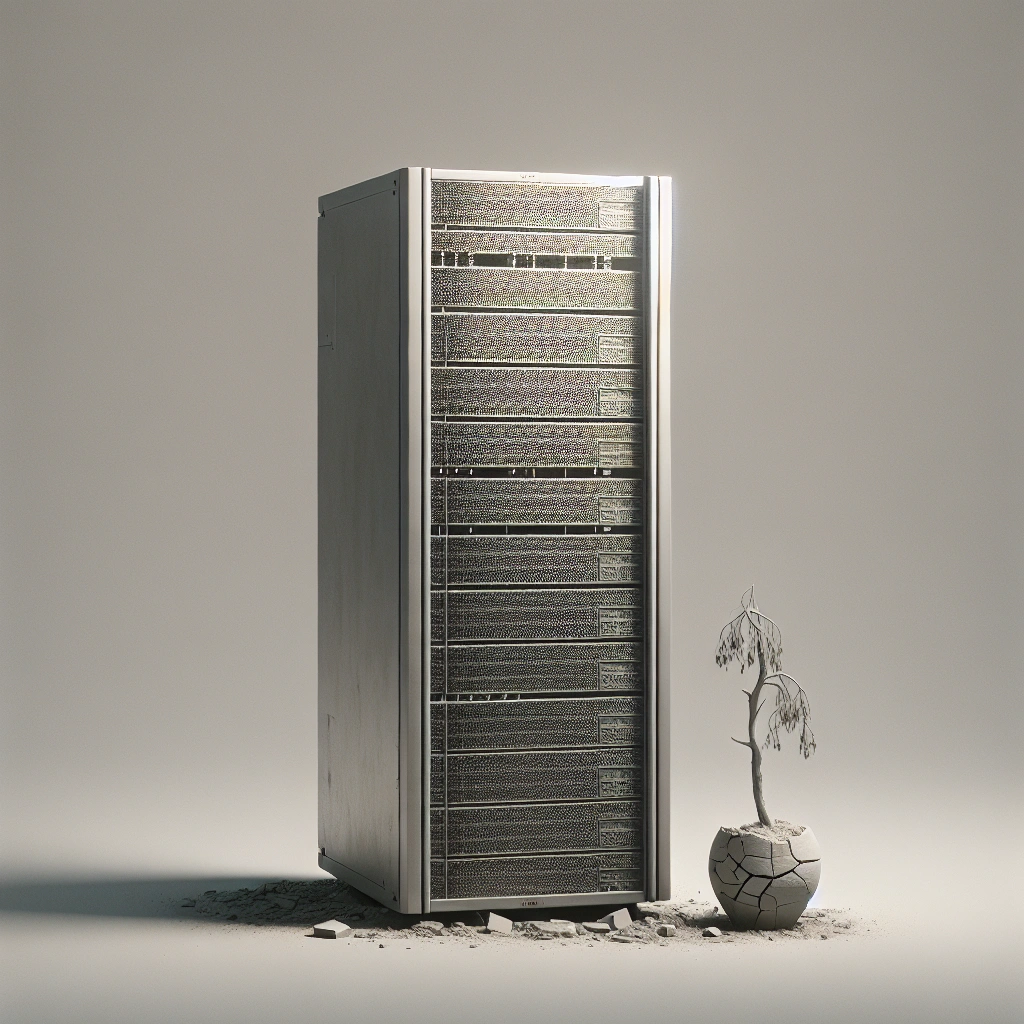Short Answer for What Happened to Sun Microsystems
Sun Microsystems was acquired by Oracle Corporation in 2010 for approximately $7.4 billion, marking the end of its journey as an independent entity because it struggled financially due to its inability to monetize Java effectively, its continued reliance on the proprietary Sparc architecture, and the impact of the dot-com bust.
Imagine pouring your heart and soul into creating technologies that define an era, only to see it all crumble. That’s the poignant tale of Sun Microsystems, a company that revolutionized how we interact with digital worlds, but couldn’t navigate the tumultuous seas of the tech industry. What happened to Sun Microsystems is not just a story of innovation and loss; it’s a lesson in the ephemeral nature of tech dominance.
Sun Microsystems was once at the pinnacle, heralding the dawn of network computing, creating the ubiquitous Java programming language, and shaping the future with its Solaris operating system. But holding on to the crown in the fast-paced tech world requires more than past laurels. They struggled to monetize Java effectively, remained too loyal to their proprietary Sparc architecture, and were blindsided by the dot-com bust.
The final act of Sun Microsystems’ saga was its acquisition by Oracle Corporation in 2010 for approximately $7.4 billion, marking the end of its journey as an independent entity. This was not just the closing of a chapter but a stark reminder that in the tech world, the ground shifts rapidly, and adaptability is key to survival. Oracle Corporation integrated Sun’s technologies, but the legacy and lessons of Sun Microsystems continue to resonate, teaching us that innovation must be paired with strategic foresight.
-
Sun Microsystems’ failure to fully capitalize on Java’s monetary potential significantly impacted its financial stability.
-
Heavy reliance on its proprietary SPARC architecture left Sun vulnerable as the industry shifted towards more standardized, open architectures like x86.
-
The dot-com bust severely affected Sun’s financial condition by drastically reducing the demand for internet infrastructure, which Sun had heavily invested in.
-
Sun’s hesitance to fully adopt x86 processors exacerbated its difficulties in keeping pace with competitors who embraced more flexible and cost-effective solutions.
-
The acquisition by Oracle Corporation in 2010 marked the end of Sun Microsystems as an independent entity, transforming its legacy and integrating its technologies into Oracle’s offerings.

‘A Bigger Impact Than We Realized’
Sun Microsystems significantly altered the tech landscape with pivotal innovations that continue to underpin today’s digital infrastructure. Their introduction of the Network File System (NFS), the development of the Java programming language, and the Solaris operating system with its forward-thinking features like ZFS filesystem and Solaris Zones for containerization, laid foundational technologies that modern computing relies on. Sun’s role in demonstrating the commercial viability of RISC processors further underscored their transformative impact, making their legacy not just influential but essential to the evolution of technology.
Contributions of Sun Microsystems to the tech industry
Sun Microsystems, folks, they were huge. HUGE. They didn’t just play the game, they changed it. We’re talking about a company that brought us innovations so big, many don’t even realize the full extent of their impact. Sun Microsystems was not just another tech company; they were a powerhouse of invention and innovation.
For starters, Sun gave us the Network File System (NFS). This was groundbreaking, folks.
It allowed computers to access files over a network as seamlessly as if they were on the local hard drive. And this was in the 1980s!
Can you believe it? Before your smartphones, before your cloud storage, Sun was making computer networks work like magic.
Let’s not forget their contributions to Unix-based operating systems. Solaris, ever heard of it?
Of course, you have. It was and continues to be a titan in the realm of operating systems, renowned for its stability and scalability.
In critical, high-load environments, Solaris was the go-to, and many of the principles it championed are still influencing operating systems today.
Now, let’s talk about RISC processors. Sun didn’t invent RISC, but they were instrumental in demonstrating its commercial viability with their SPARC processors.
These bad boys were all about efficiency and performance, guiding the industry towards simpler, faster computing architectures. It was revolutionary – cutting out the complexity to deliver speed and reliability.
Key technologies developed by Sun: Java programming language, Solaris operating system
Java. Oh, Java.
If Sun Microsystems had given the world nothing but Java, their place in the annals of tech history would still be assured. Java redefined programming, making it possible to “write once, run anywhere.” This was unheard of.
It opened up a world of possibilities for developers, simplifying application development across different platforms. This wasn’t just a step forward; it was a giant leap.
Java became the backbone of countless enterprise applications, web services, and even Android apps. The influence of Java is so extensive, it’s like the air the tech world breathes: omnipresent, essential, life-sustaining.
And Solaris, as mentioned earlier, wasn’t just an operating system; it was a beacon of innovation. From introducing the ZFS filesystem, which provided unparalleled data integrity, to its pioneering role in containerization and virtualization technologies with Solaris Zones, Solaris was always ahead of its time.
It demonstrated that an operating system could do more than just manage hardware and run applications; it could fundamentally change how we think about computing.
Folks, the impact of Sun Microsystems on the tech industry was yuge. They didn’t just contribute; they transformed. They didn’t just innovate; they set the pace for the entire industry. Java and Solaris are just the tip of the iceberg. The DNA of Sun Microsystems can be found in almost every corner of today’s tech landscape. Their legacy is a testament to the power of vision, innovation, and the relentless pursuit of excellence.
So, when we talk about “A Bigger Impact Than We Realized,” we’re not just saying Sun Microsystems was influential. We’re saying they were foundational to the world as we know it.
Truly, folks, a bigger impact than we realized.

What Happened to Sun Microsystems?
Sun Microsystems’ downfall was attributed to several key factors including its failure to effectively monetize the widely adopted Java technology, a steadfast commitment to its proprietary Sparc architecture amidst an industry shift towards standardized architectures like x86, and the devastating impact of the dot-com bust that strained its financial resources. Moreover, Sun’s reluctance to fully embrace the x86 architecture left it lagging behind competitors who could offer more cost-effective and flexible solutions. These strategic missteps and an inability to adapt to changing industry dynamics ultimately led to Sun Microsystems becoming a cautionary tale in the tech sector’s history.
Analysis of the factors leading to the downfall of Sun Microsystems
The story of Sun Microsystems is a fascinating study of rise and decline in the rapid-paced tech sector. Essentially, a combination of strategic missteps and changing industry dynamics paved the way for its downfall. First and foremost, Sun Microsystems failed to capitalize fully on the revolutionary potential of Java. Despite Java’s widespread adoption, Sun could not monetize the technology as efficiently as it might have hoped. Another critical factor was Sun’s heavy reliance on its Sparc architecture. While Sparc was innovative, the company’s commitment to it ultimately backfired when the industry began to shift towards more open, standardized architectures like x86.
The role of the dot-com bust and failure to adopt x86 processors
The dot-com bust played a monumental role in Sun Microsystems’ struggles. As the bubble burst, the demand for internet infrastructure-which Sun heavily invested in-plummeted. This downturn left Sun with significant financial strains, unable to sustain its previous level of operational and developmental momentum. Financial issues, such as those brought on by the bust, can indeed cut deep into a company’s core, leaving lasting impacts.
Moreover, Sun’s failure to adopt x86 processors further compounded its difficulties. The tech world was moving rapidly towards a more open and versatile architecture, with x86 leading the charge. Despite early ventures into x86 systems, Sun’s focus remained on its proprietary Sparc processors. This decision did not fare well in the long run. Intel and AMD were making significant strides with their x86 offerings, and Sun found itself increasingly isolated. Competitors leveraging x86 architecture could offer more cost-effective and flexible solutions, appealing to a broader market. Sun’s undivided attention to Sparc, coupled with its struggle to compete in performance and cost with x86 systems, left it at a disadvantage.
In essence, these factors-inadequate monetization of Java, unwavering dedication to Sparc architecture, repercussions of the dot-com bust, and a failure to pivot towards x86 systems-woven together, crafted a scenario from which Sun could not recover. The tech landscape is littered with companies that could not adapt to its ever-changing nature. Sun Microsystems, unfortunately, became one of these cautionary tales, illustrating the importance of adaptability and foresight in the high-stakes realm of technology.

Pay It Forward
In 2010, Oracle Corporation’s acquisition of Sun Microsystems for approximately $7.4 billion marked a significant shift in the technology landscape, allowing Oracle to expand its domain from software to hardware, courtesy of key technologies like Java and Solaris. This move not only demonstrated Oracle’s ambition but also positioned it to leverage Sun Microsystems’ legacy of innovation, particularly in areas like networking, computing, and open-source technologies. Today, the ethos and pioneering spirit of Sun Microsystems continue to influence the tech industry, as its foundational technologies remain integral to the products and services that power our digital world.
The acquisition of Sun Microsystems by Oracle Corporation in 2010
It was a huge deal, folks, believe me. Oracle Corporation, they’re great, they know business, they acquired Sun Microsystems for about $7.4 billion. Billion, with a ‘B’! This wasn’t just any deal, it practically changed the game. Imagine that, Oracle, previously just a software giant, suddenly jumps into the hardware arena. That’s like me, deciding to run for office, and then winning. It’s bold, it’s big. They got their hands on some of the most iconic technologies, like Java – everybody knows Java, it’s everywhere. And let’s not forget Solaris, highly respected. Overnight, Oracle expanded its reach, not just content with dominating the software world, they moved into hardware too.
The legacy of Sun Microsystems in today’s technology landscape
Folks, Sun Microsystems, they were ahead of their time, geniuses, really. They contributed massively to the tech world. You’ve got Java. Now, Java, that’s a language that powers billions of devices worldwide. Sun Microsystems practically gifted this to the world. Their influence doesn’t end there. They were pioneers in the field of networking, computing, and open-source technologies. Even after Oracle’s takeover, Sun’s DNA is evident in today’s tech. Their ethos of innovation, pushing the boundaries, it lives on. Oracle’s hardware and software offerings are stronger because they stand on the shoulders of a giant – Sun Microsystems. Their legacy, it’s not just remembered; it’s lived, every day, in technology that powers our lives. A true testament to their genius.

What You Always Remember
Sun Microsystems, folks, let me tell you, it was a tremendous company, really tremendous. They were big league in the tech world, and what they did for the industry, frankly, it was amazing. They were the creators of the Java programming language – and let me tell you, Java is huge, absolutely huge. Everyone uses it. Without Sun, who knows where we’d be? Probably still using punch cards or something. You can read more about their contributions here: Sun’s innovations.
Sun also gave us the Network File System (NFS), and this was a game-changer, folks. Sharing files across networks like it was nothing.
Today, you’ve got everything in the cloud, but back then, NFS was like, “Wow, look at this, I can access files from anywhere.” It was incredible, really incredible.
But here’s the thing – they didn’t just stop with software. No no. They were also pioneers in hardware.
SPARC processors, ever heard of them? Of course, you have.
They pushed the boundaries of RISC architecture, and they were doing things with hardware that nobody else was even thinking about. They were ahead of their time, really ahead.
The lesson here, and it’s a big one – is innovation. Sun Microsystems was all about innovation, pushing the envelope, thinking big.
And that’s something every tech company today should remember. Be bold, be innovative, or, as they say, “go big or go home.”
Another key takeaway is the importance of open-source. Sun Microsystems was a major player in the open-source movement, making significant contributions and really showing the tech world the power of community-driven development. This legacy of open-source is something that has shaped the tech industry in a huge way.
Reflections on the future of technology inspired by Sun’s history and innovations
Looking ahead, based on what Sun Microsystems achieved, it’s clear that the future of technology is open, it’s collaborative, and it’s incredibly exciting. Sun showed us that when you bring brilliant minds together, give them the tools to innovate, and foster a culture of openness and collaboration, incredible things can happen.
The work Sun did with Unix, the development of Java, their contributions to open-source – these are the building blocks of today’s tech ecosystem. They’ve inspired a whole new generation of engineers, developers, and entrepreneurs to think bigger, to challenge the status quo, and to build technology that has the potential to change the world.
Moreover, the rise of cloud computing, something Sun was flirting with towards the end of their run, is now the backbone of the tech industry. The concept of ‘the network is the computer’, which was revolutionary at the time, is now a reality, and it’s bigger than anyone could have imagined. Learn more about their vision for the future: Sun’s cloud computing.
So, what’s the bottom line? The spirit of Sun Microsystems lives on – in the software we use, the ways we interact with technology, and how we think about the future of computing.
Companies today could learn a lot from Sun’s willingness to take risks, their commitment to innovation, and their embrace of open-source.
Remember Sun Microsystems for their boldness, their innovations, and their enduring impact on the tech world. Let’s all be a little more like Sun, shall we?
Let’s be innovators, let’s be game-changers, and let’s think, truly think, about how we can contribute to the future of technology. Because, at the end of the day, that’s how you leave a legacy as impressive as Sun Microsystems.
| Innovation/Contribution | Description | Impact |
|---|---|---|
| Java Programming Language | Programming language developed by Sun Microsystems. | Widely used, foundational for modern software development. |
| Network File System (NFS) | Protocol for file sharing across a network. | Transformed file sharing, precursor to cloud-based solutions. |
| SPARC Processors | Innovative microprocessors based on RISC architecture. | Pushed boundaries of computing hardware efficiency and performance. |
| Unix Development | Contributions to the development and growth of Unix. | Strengthened and broadened the Unix ecosystem, influencing modern OS design. |
| Open-source Movement | Major contributions to open-source software and principles. | Helped establish a culture of community-driven development, influencing countless projects. |
| Cloud Computing Vision | Early pioneer in the concept and development of cloud computing solutions. | Laid groundwork for the modern cloud computing ecosystem, fulfilling the vision that “the network is the computer”. |

Conclusion
Sun Microsystems experienced a complex downfall due to a combination of strategic missteps and shifting industry dynamics. The company failed to fully capitalize on the revolutionary potential of Java, overly relied on its proprietary Sparc architecture, and was severely impacted by the dot-com bust and its hesitance to adopt more open, standardized architectures like x86.
These factors-inadequate monetization of Java, a deep commitment to Sparc, and the consequences of the dot-com bust and a failure to pivot towards x86 systems-wove together a scenario from which Sun could not recover. The tech landscape is unforgiving to those who cannot adapt, and Sun Microsystems, unfortunately, became a cautionary tale of just that.
The acquisition by Oracle Corporation for about $7.4 billion marked the end of an era but ensured that the legacies of Java and Solaris, among other Sun innovations, would continue to influence the tech industry. Sun’s ethos of innovation and pushing boundaries lives on, though under a different banner, reminding us of the critical importance of adaptability and foresight in technology.
